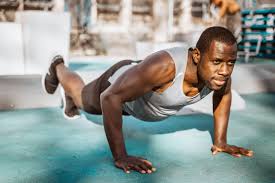In today’s fast-paced and digitally connected world, where sedentary lifestyles are the norm and convenience often trumps health, physical fitness has never been more critical. With rising rates of obesity, chronic diseases, and mental health disorders, fitness is no longer a luxury or a niche hobby—it is a necessity. Physical fitness encompasses far more than just having a toned body or lifting heavy weights. It’s a holistic concept that integrates strength, endurance, flexibility, mental well-being, and lifestyle habits into a balanced, healthful existence.

Understanding Physical Fitness
Physical fitness is generally defined as the body’s ability to perform daily tasks efficiently without undue fatigue, and with enough energy left over to enjoy leisure-time activities and respond to emergencies. This ability is built on five key components: cardiovascular endurance, muscular strength, muscular endurance, flexibility, and body composition. Each of these elements plays a vital role in overall health. Cardiovascular endurance reflects the efficiency of the heart and lungs, muscular strength and endurance indicate how well your muscles perform, flexibility improves movement and reduces injury, and body composition ensures a healthy ratio of fat to lean mass.
Achieving physical fitness is not about attaining an “ideal” body shape. It’s about how well your body functions. Fitness is for everyone—regardless of age, gender, body type, or background. Whether you’re a teenager aiming for sports performance, a working professional trying to manage stress, or a senior seeking to maintain mobility, physical fitness contributes to improved quality of life.

Types of Physical Fitness Activities
There’s no one-size-fits-all approach to fitness, and that’s what makes it exciting and accessible. Aerobic exercises such as running, swimming, cycling, or dancing enhance cardiovascular endurance and burn calories. Strength training—using weights, resistance bands, or bodyweight movements like push-ups and squats—helps build muscle and improve bone density. Flexibility exercises such as yoga, Pilates, or dynamic stretching enhance joint range of motion and help prevent injuries. Balance and coordination activities, often overlooked, are crucial especially as we age. These can include tai chi, agility drills, or stability ball exercises.
Functional fitness is another emerging trend, where movements mimic real-life activities. For example, squats imitate sitting down and standing up; planks help with posture and core strength. This type of training helps improve performance in daily life tasks and is particularly beneficial for older adults or those in rehability.


Creating a Fitness Routine That Works
Starting a fitness journey doesn’t require a gym membership or expensive equipment. The key is consistency and enjoyment. Begin with small, realistic goals—like walking for 20 minutes daily, doing 10-minute stretches in the morning, or joining a beginner’s yoga class online. Gradually increase the intensity and variety of your workouts to keep your body challenged and your mind engaged. It’s important to mix different types of exercises to work all areas of fitness—strength, endurance, and flexibility.
Recovery and rest are as important as exercise. Your body needs time to repair and grow stronger, so don’t underestimate the value of sleep and rest days. Nutrition also plays a critical role—fueling your body with whole, nutrient-dense foods supports performance, recovery, and overall health. Hydration, sleep, and stress management complete the picture of a well-rounded fitness lifestyle.
Tracking progress can be motivating. Whether you use a fitness app, a journal, or simply observe changes in energy, sleep, or how your clothes fit, these indicators help reinforce healthy habits. It’s also vital to listen to your body—pain, fatigue, or lack of motivation can be signs to slow down, adjust your routine, or seek professional guidance.

Overcoming Common Barriers to Fitness
Despite the benefits, many people struggle to maintain a fitness routine due to time constraints, lack of motivation, or fear of injury. The good news is that fitness doesn’t have to be time-consuming or overwhelming. Micro-workouts—short sessions lasting 10–15 minutes—can be effective if done consistently. Incorporating movement into your day, like taking stairs instead of elevators or stretching during TV commercials, also contributes to fitness.
Motivation often comes from habit and purpose. Find a workout buddy, set non-scale goals (like running a 5K or doing 10 push-ups), or join a class for accountability. Having a personal “why”—whether it’s being active for your kids, reducing stress, or improving health markers—keeps you grounded when motivation dips. If fear of injury holds you back, consider working with a certified trainer or physiotherapist who can design a safe and effective plan tailored to your needs.
Fitness Across the Lifespan
Physical fitness is vital at every stage of life. For children and teens, fitness helps with physical development, academic performance, and social skills. Schools and families should encourage active play, sports participation, and screen-time limits to promote lifelong habits. For adults, regular activity helps manage work stress, prevent weight gain, and reduce the risk of chronic illnesses. Office workers especially benefit from posture-focused exercises and regular movement breaks to combat the effects of sitting.
Older adults may face challenges like joint stiffness, muscle loss, or balance issues, but staying active is crucial to maintaining independence. Low-impact activities like swimming, walking, tai chi, or chair-based exercises can improve strength, flexibility, and fall prevention. It’s never too late to start, and the rewards—better mobility, mood, and vitality—are well worth the effort
The Social and Emotional Side of Fitness
In recent years, social media has become both a motivator and a challenge for fitness culture. While platforms can inspire with transformation stories and workout ideas, they can also promote unrealistic standards. It’s important to remember that fitness is deeply personal and should be measured by how you feel, not by comparison with others. Celebrate your progress, no matter how small, and be kind to yourself in the process.
Beyond physical and mental health, fitness offers emotional and social benefits. Joining a local running club, dance class, or group workout creates a sense of community and shared purpose. Fitness can foster discipline, perseverance, and resilience—traits that carry over into personal and professional life. It also provides a positive outlet for emotions, helping individuals cope with grief, frustration, or anxiety.
Looking Ahead: The Future of Fitness
As technology continues to evolve, so does the fitness landscape. From smartwatches and fitness apps to virtual reality workouts and AI-powered trainers, people now have more tools than ever to personalize and optimize their fitness journeys. Online classes, wearable tech, and health-tracking platforms offer flexibility and feedback, making fitness more accessible and data-driven. But while technology can enhance your routine, the fundamentals remain unchanged: move often, rest well, eat wisely, and enjoy the process.
In a post-pandemic world, the importance of personal health and immunity has been magnified. Fitness isn’t just about looking good—it’s about being prepared for life’s challenges, staying strong through illness, and building a body that supports your passions. The more you invest in your health today, the more freedom, confidence, and vitality you’ll have tomorrow.


